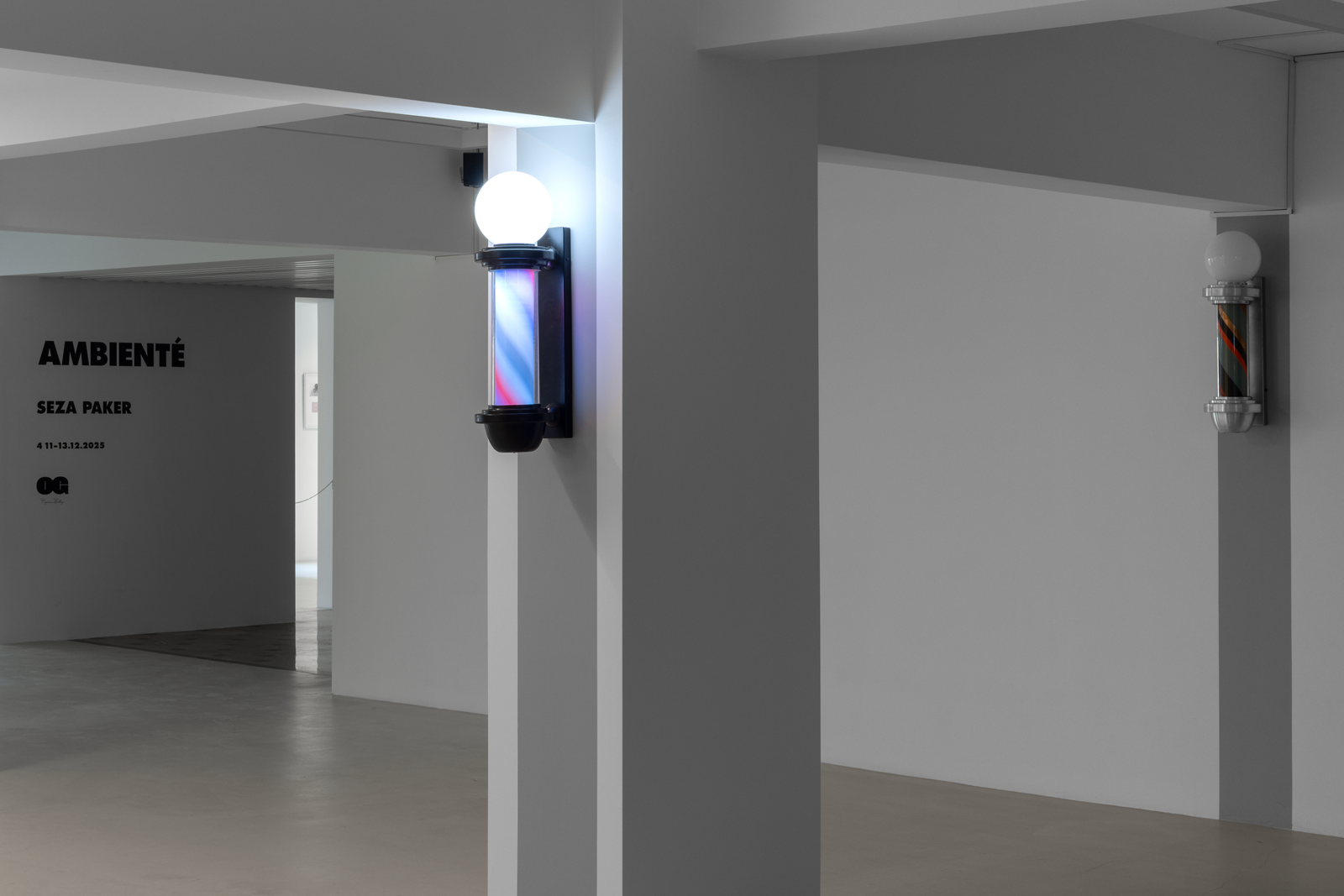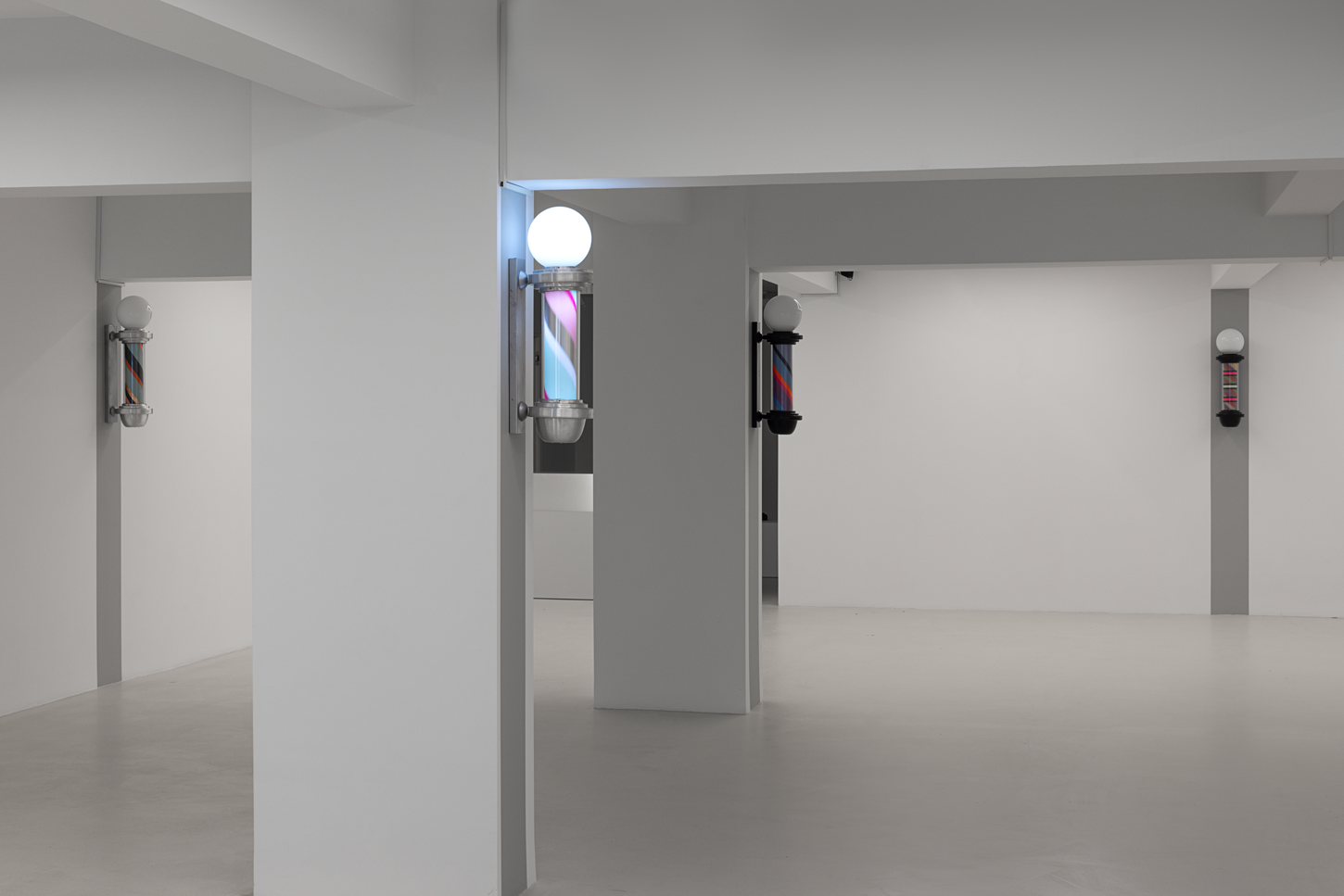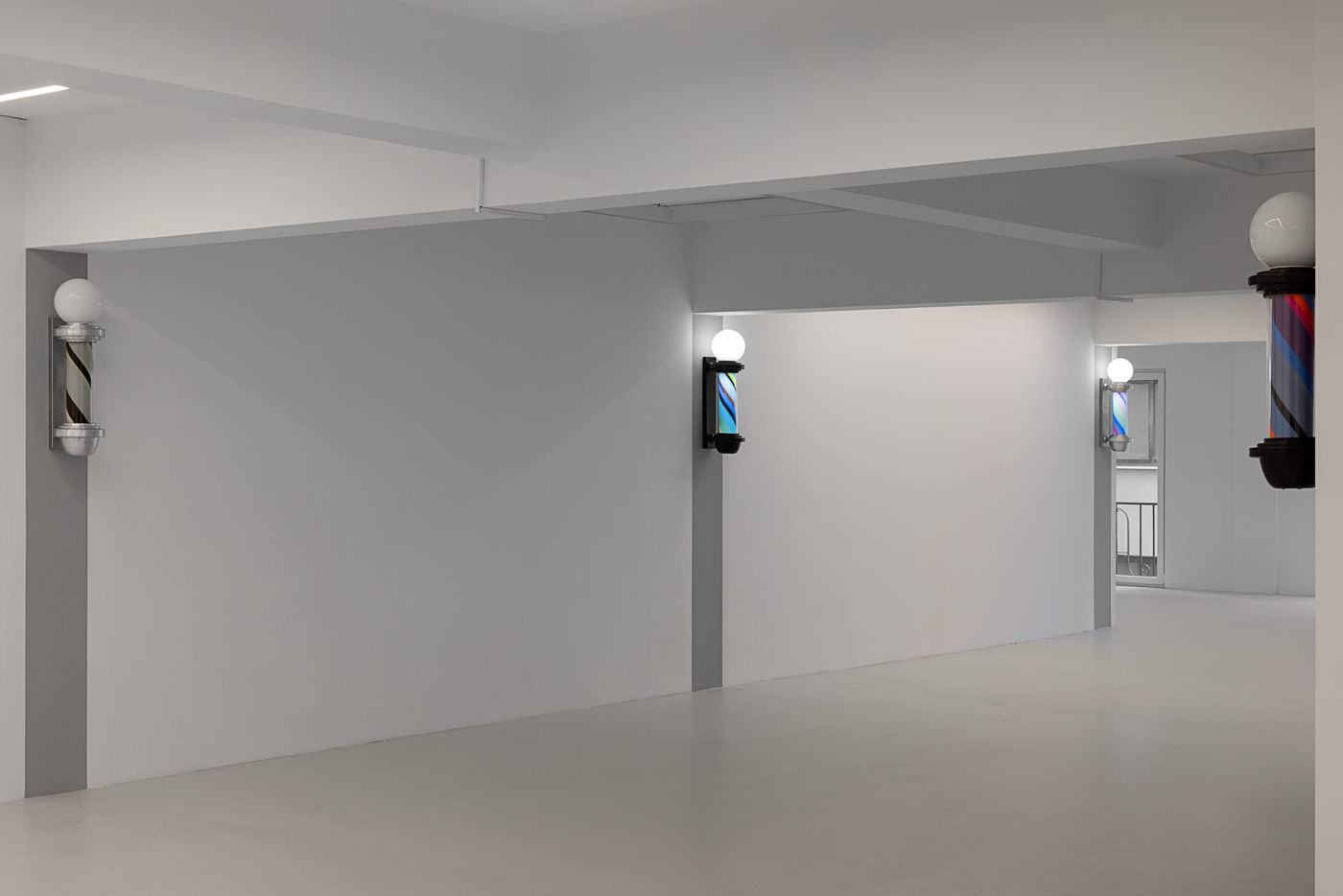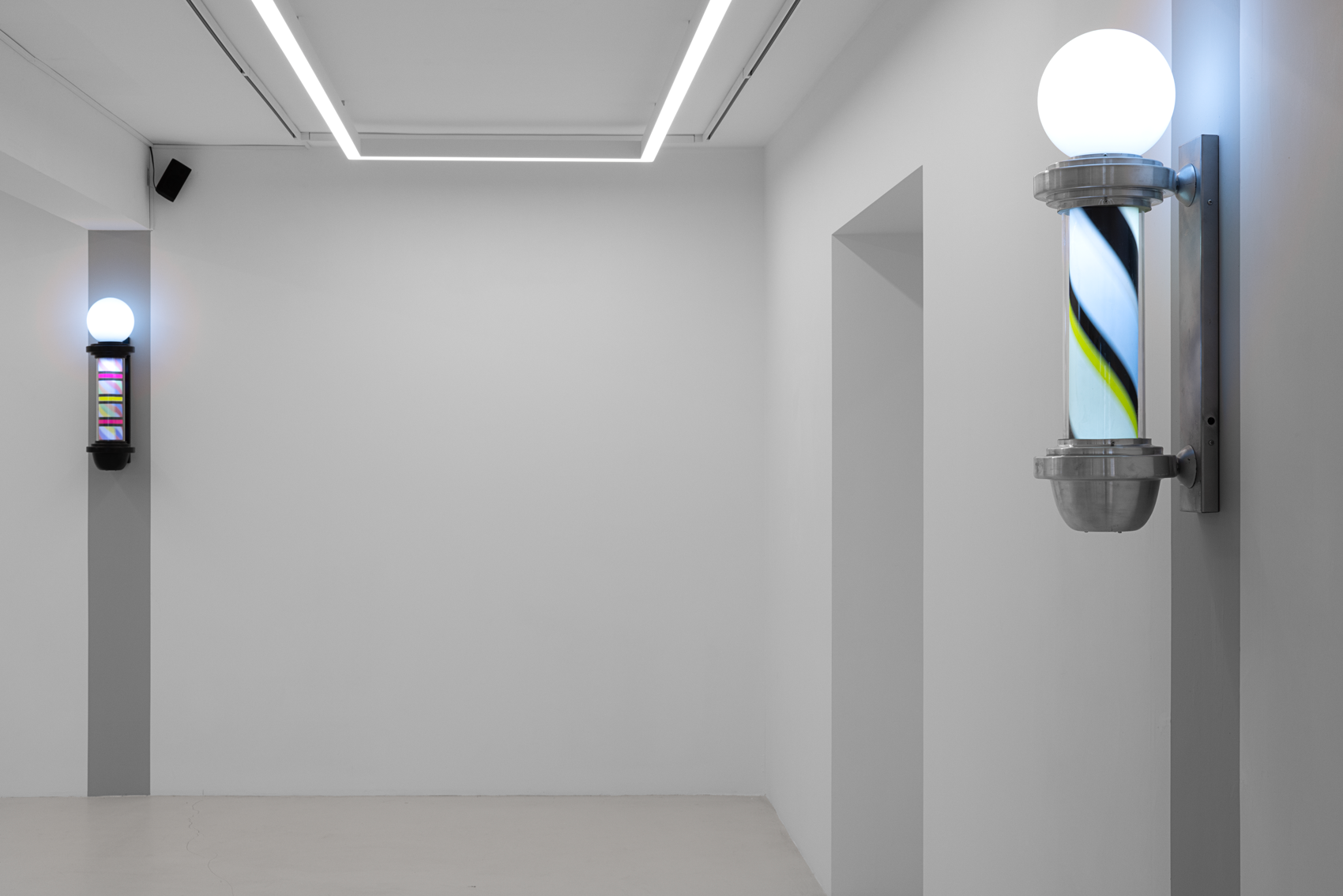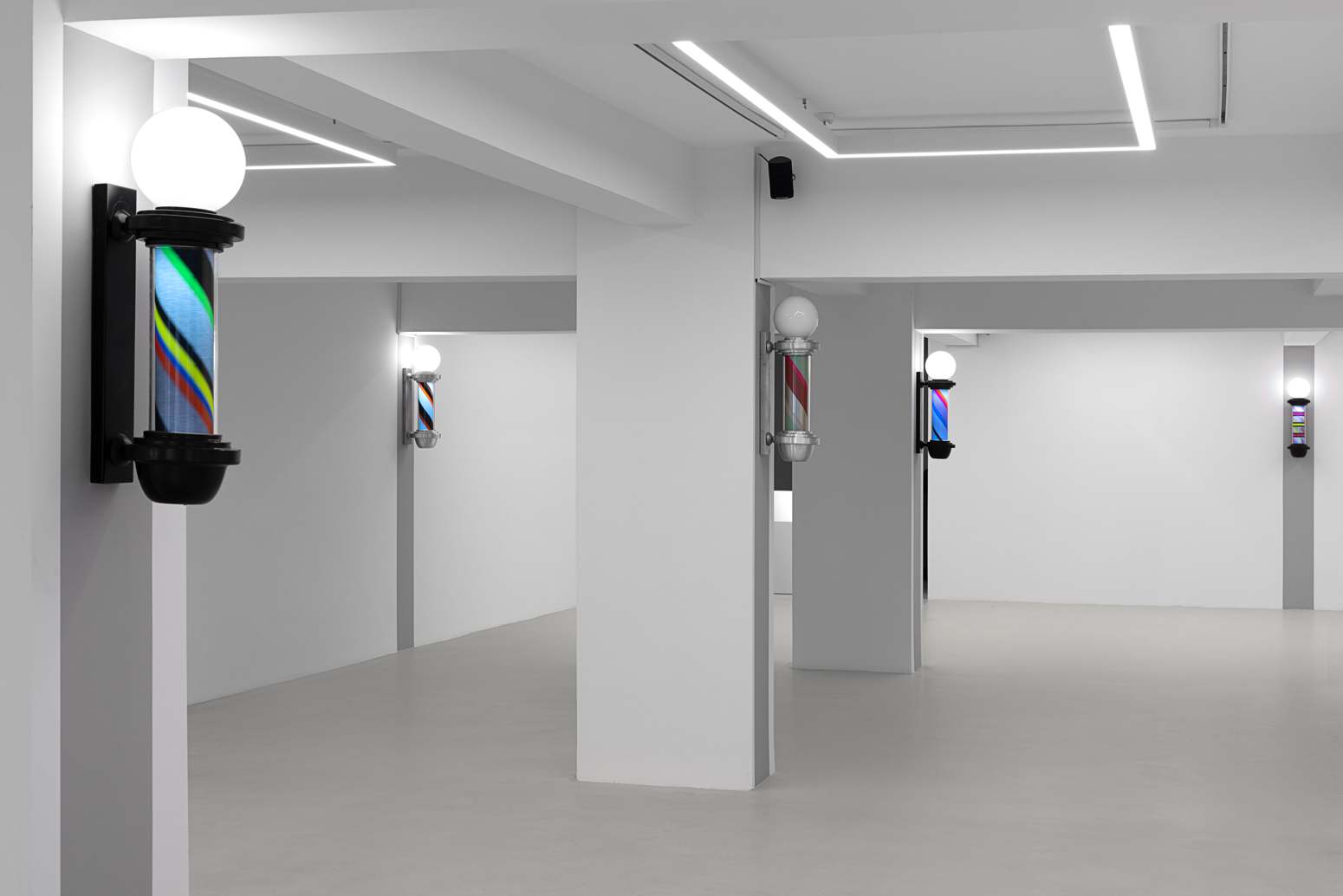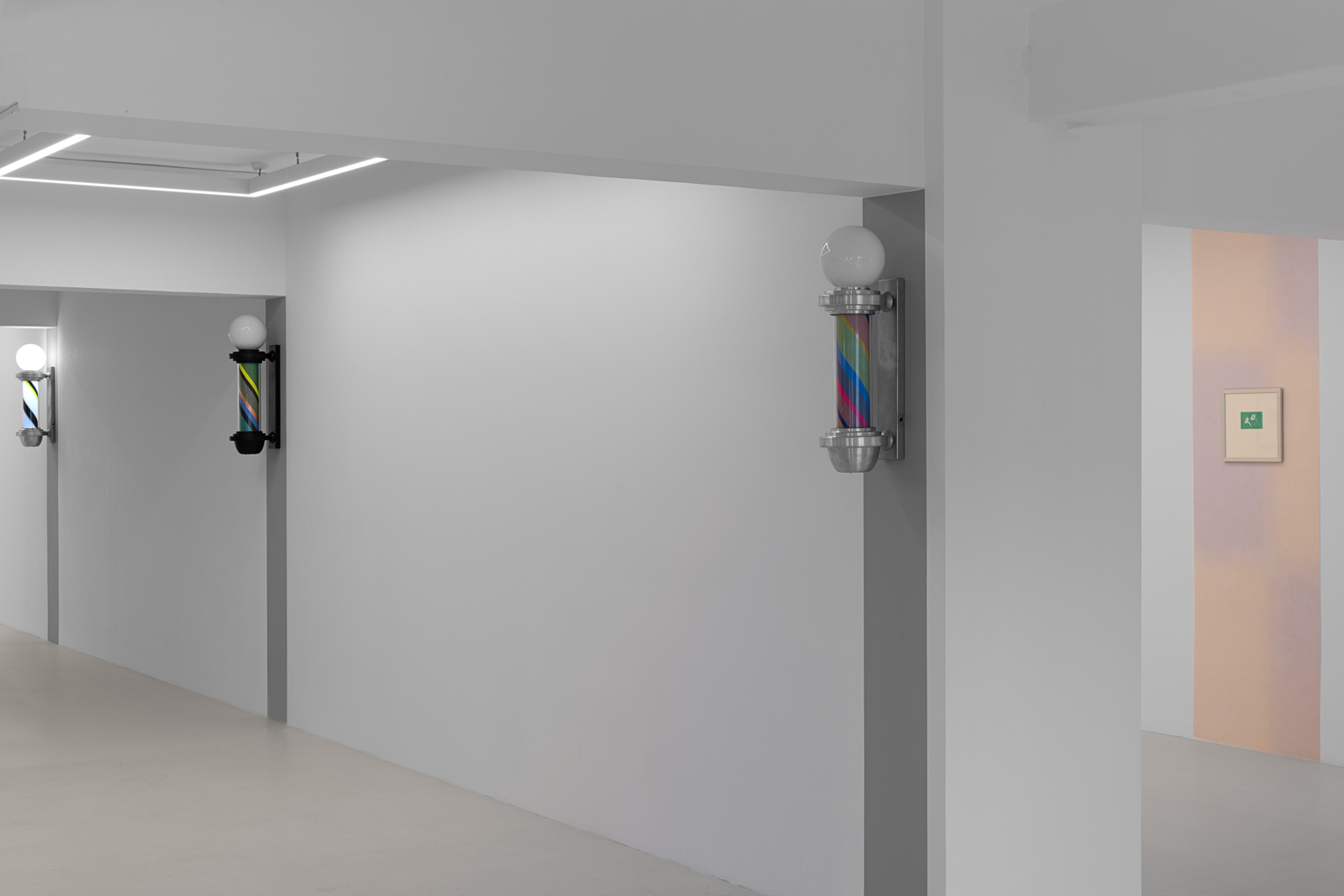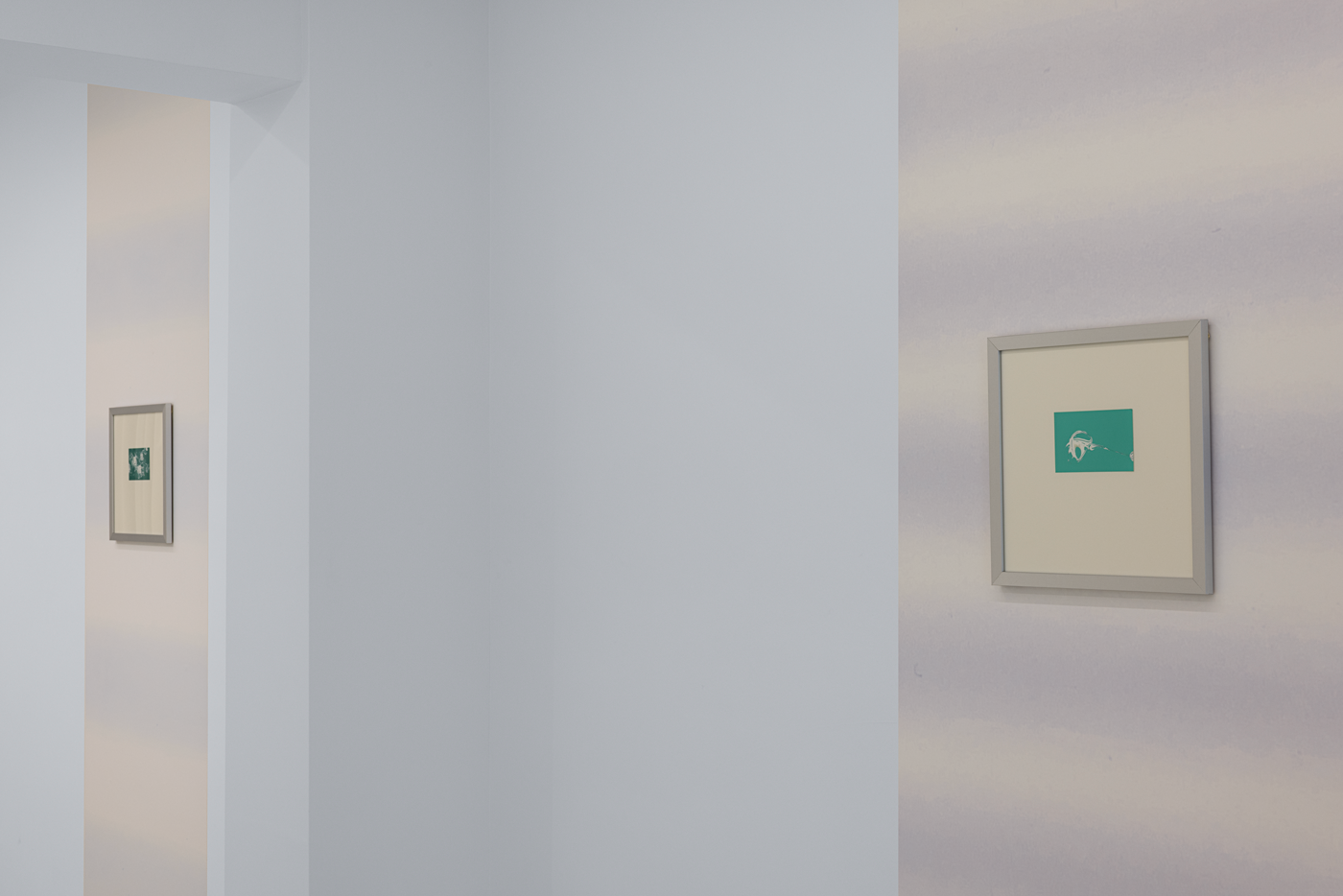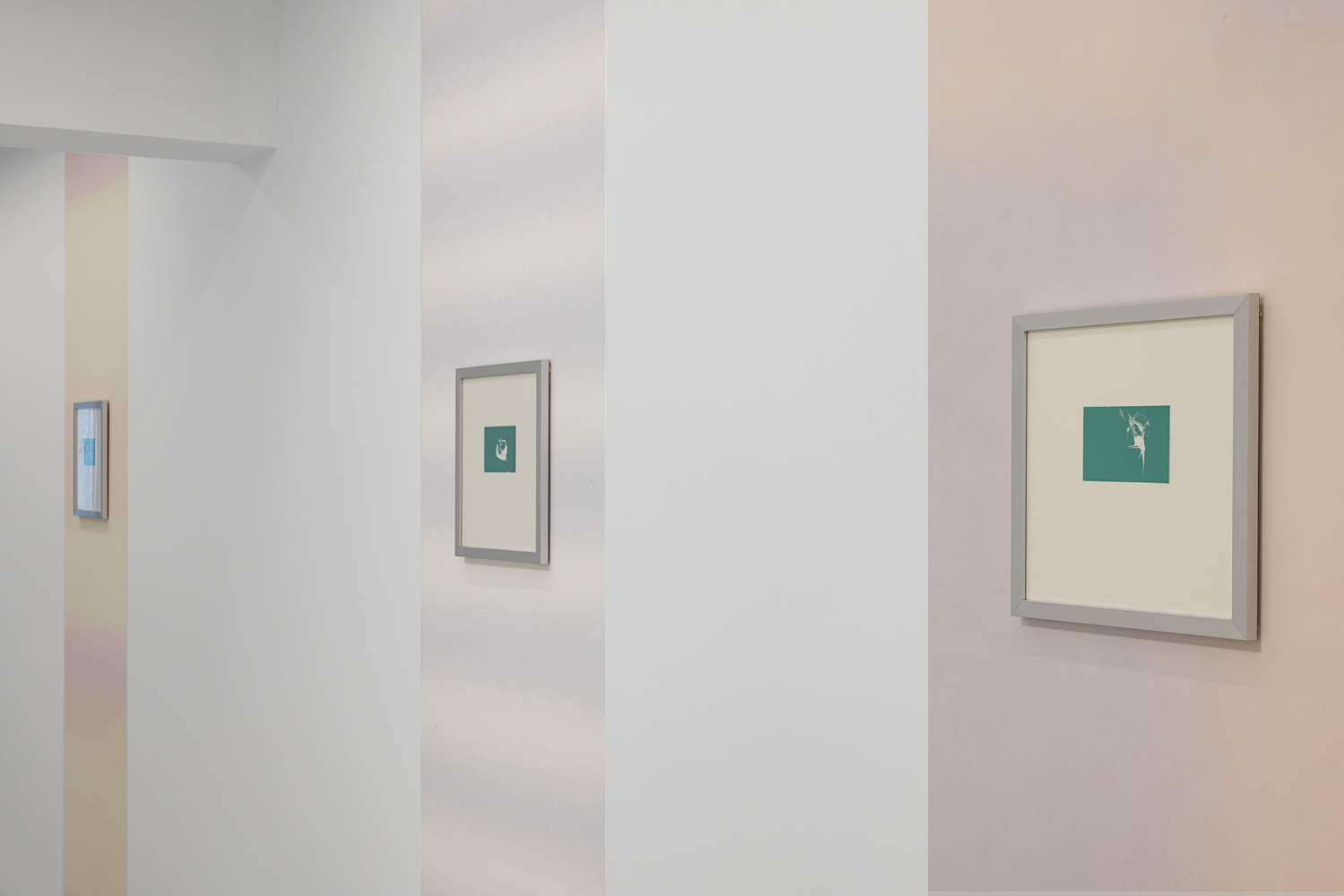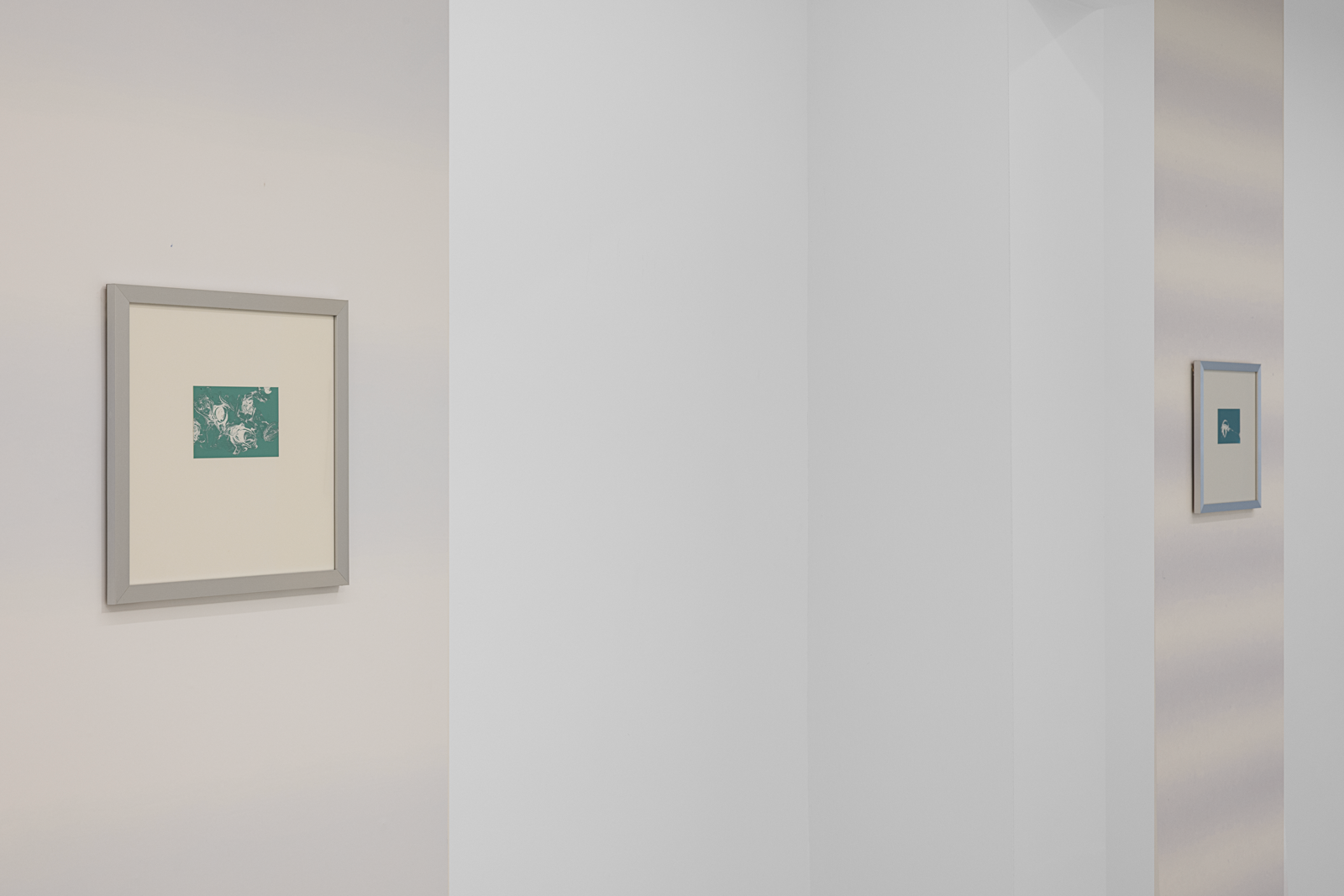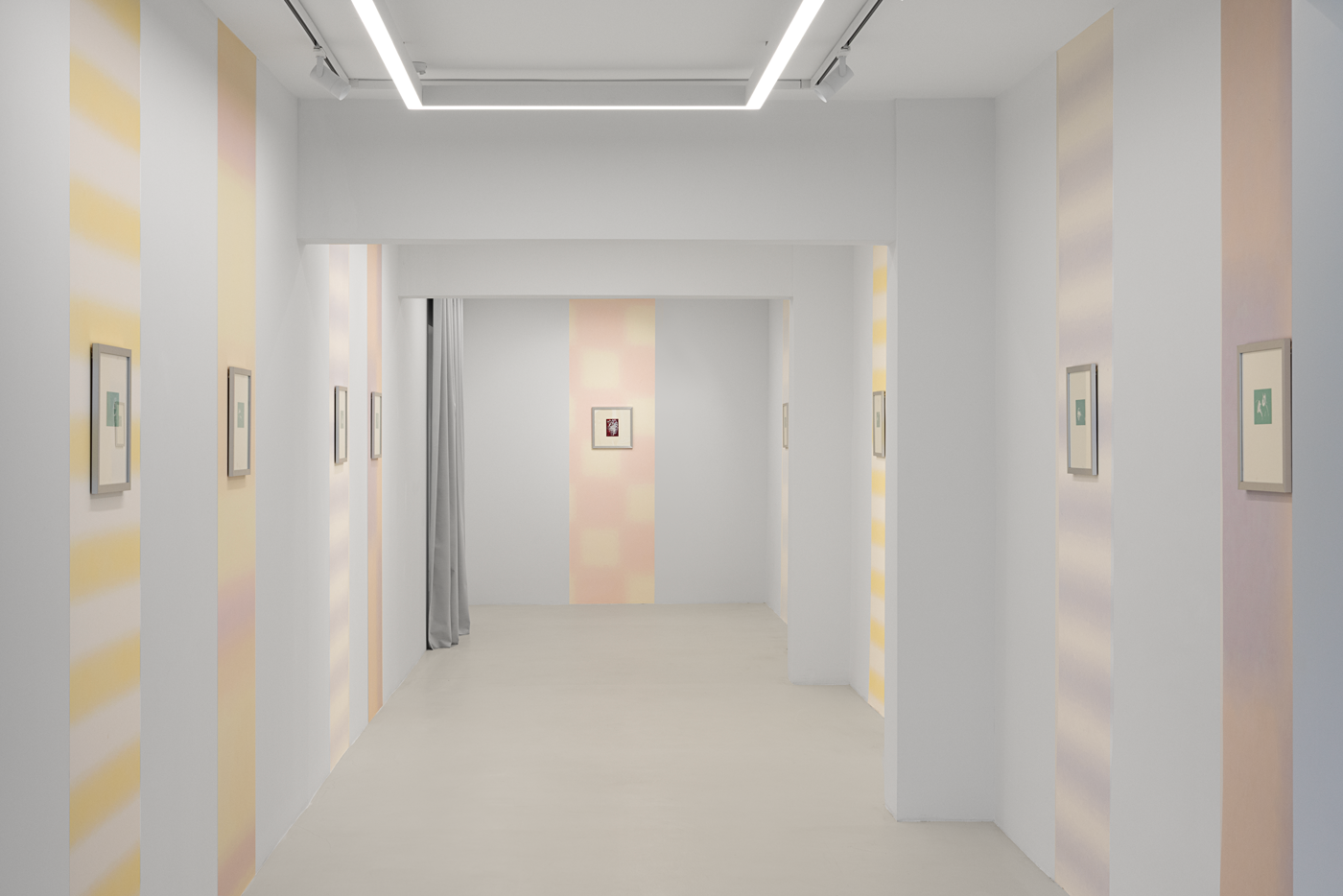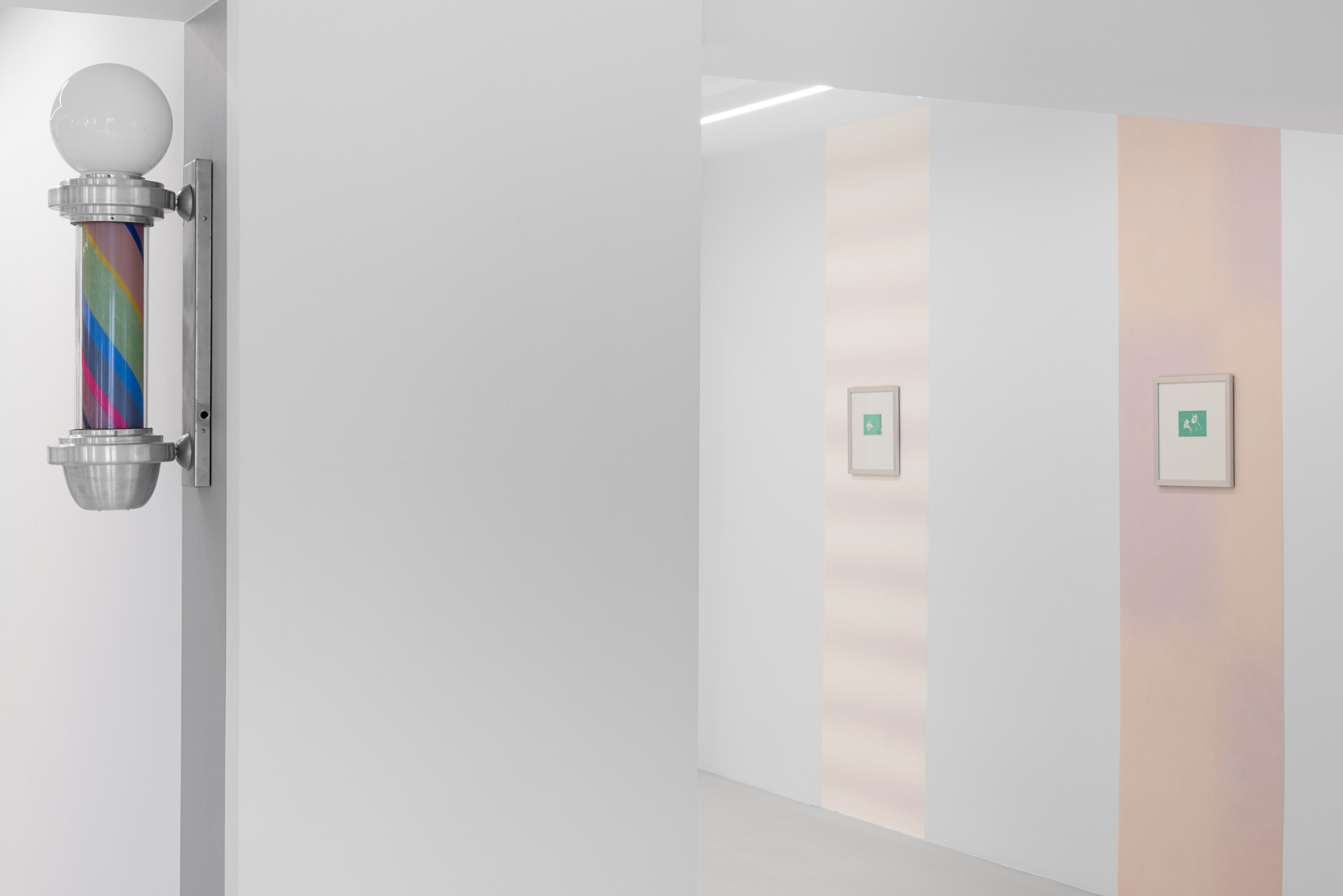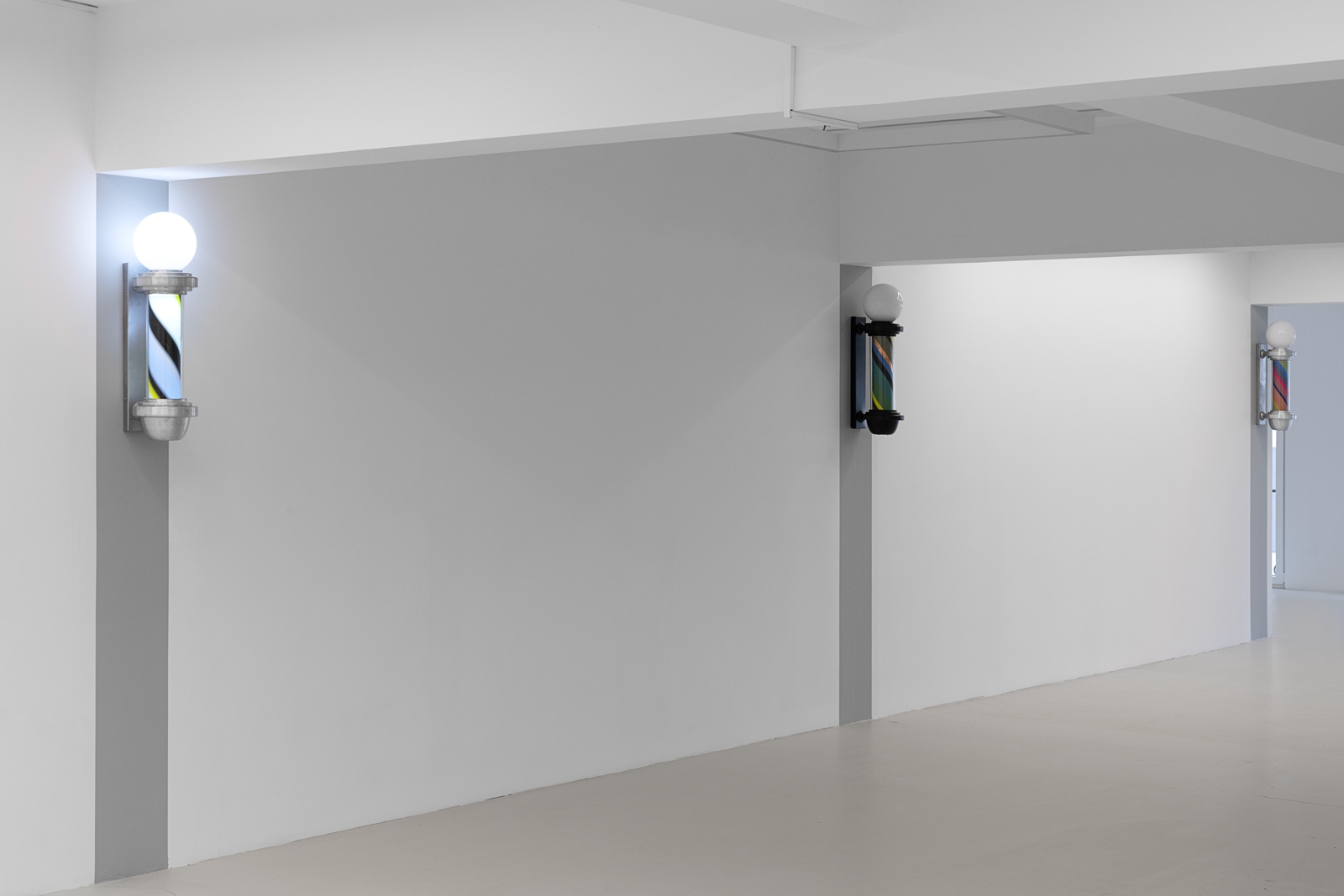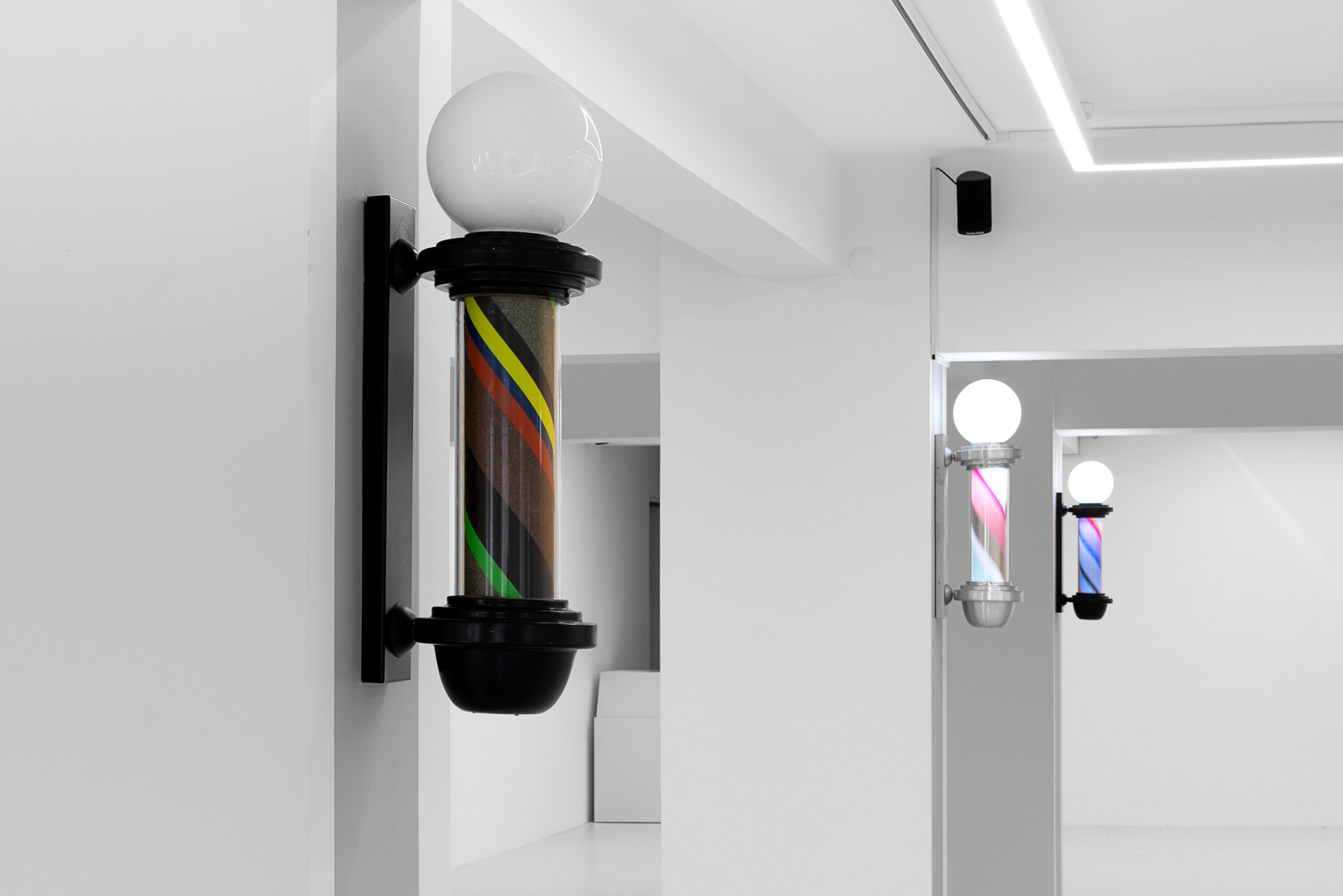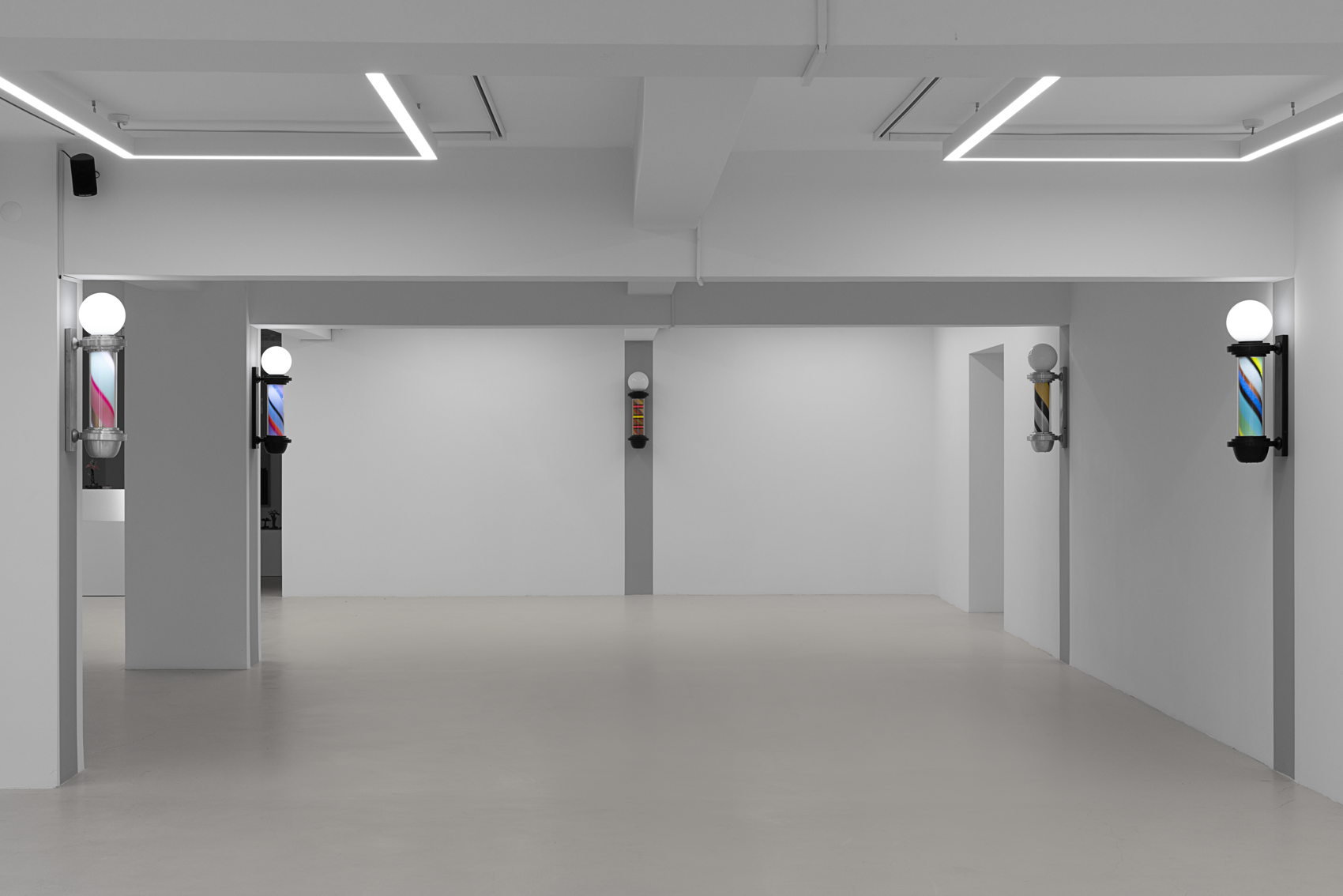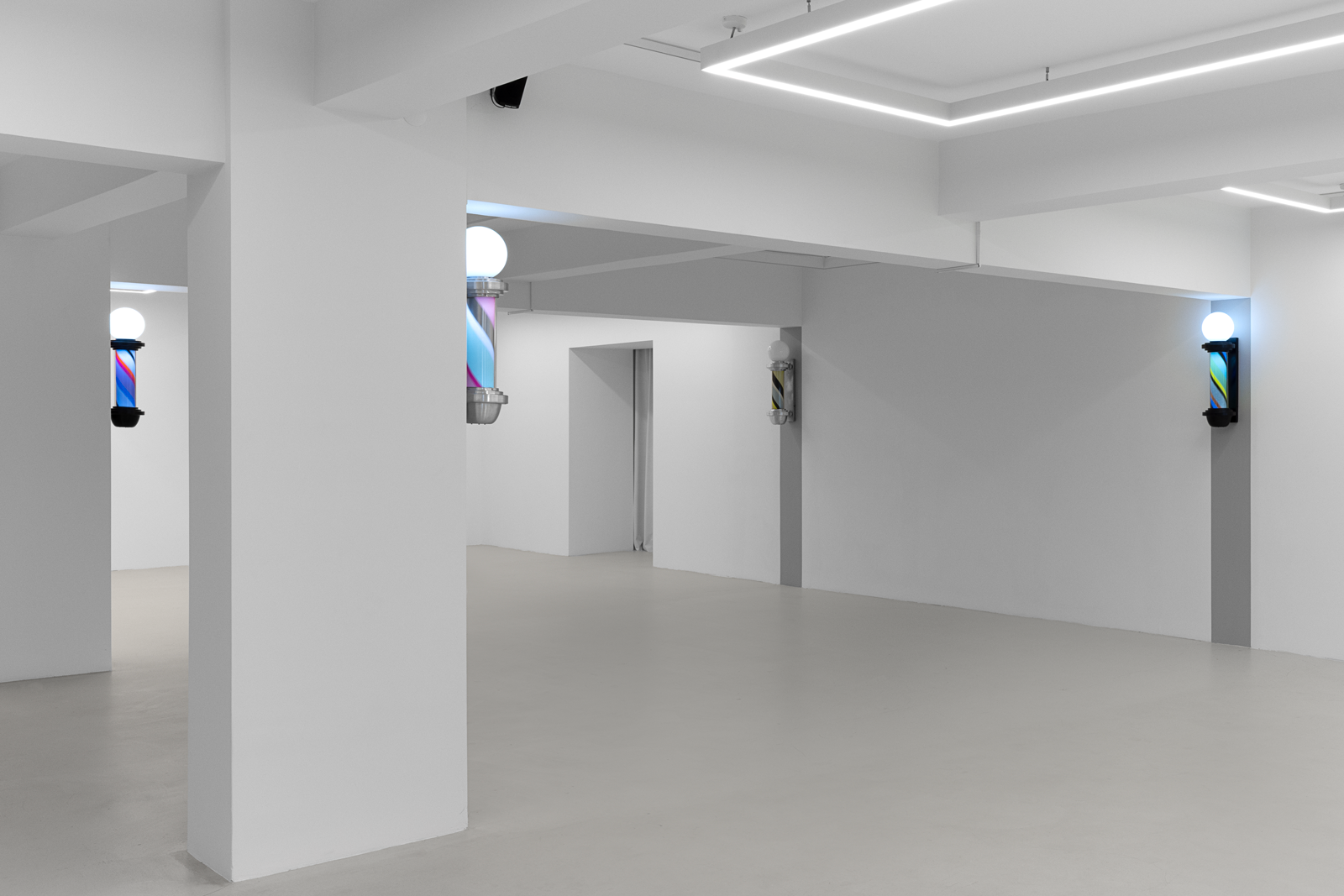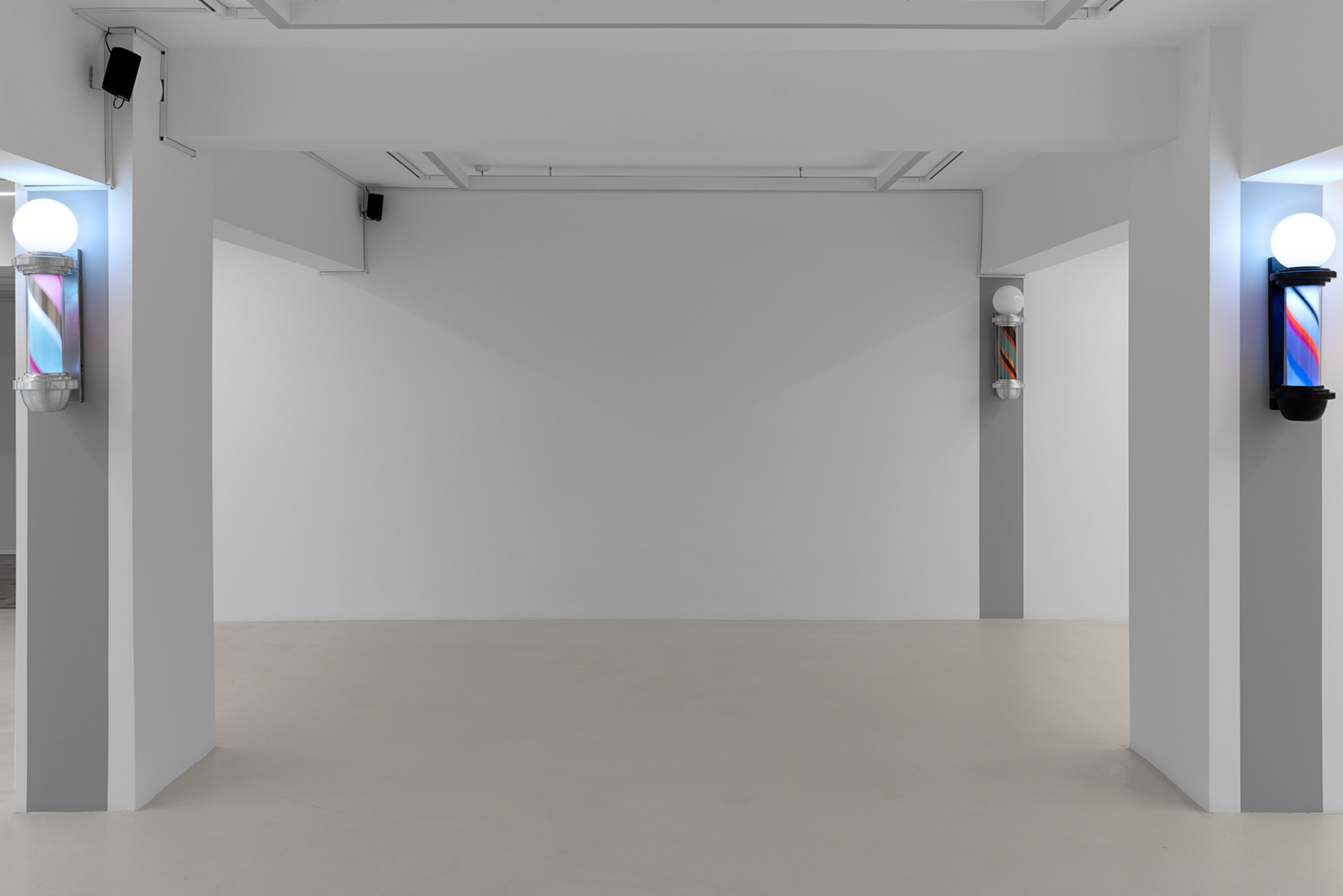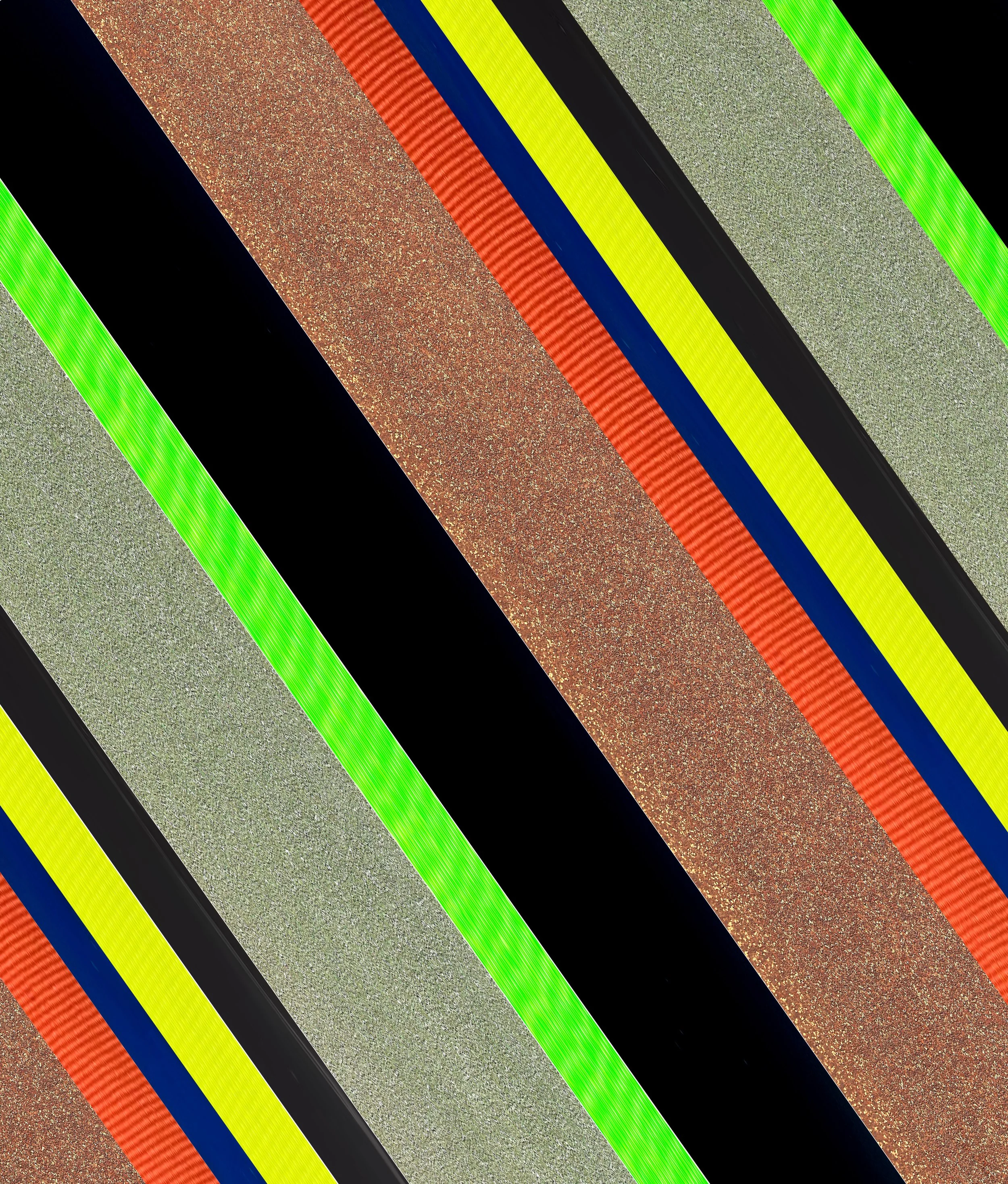
OG Gallery is pleased to present AMBIENTÉ, Seza Paker’s first solo exhibition with the gallery.
As an extension of the artist’s world of ready-mades, poor materials, and minimal gestures, the exhibition brings together Paker’s long-standing explorations of space, perception, and rhythm within a newly distilled formal language.
Through light, color, and movement, Paker constructs a new atmosphere of perception. The exhibition revisits the artist’s ongoing concerns with rhythm, equality, and shared sensibility, articulated here through a minimal spatial composition.
Once a symbol of public life and equality, the barber’s lamp originally signified the intertwined elements of red, white, and blue—representing blood, bandages, and veins—a visual emblem of both bodily and social healing. Paker reverses this symbolism: the colors shift, multiply, and vibrate. Each lamp turns at its own rhythm; each rotation becomes a meeting point of time and color.
Extending through the corridor, Paker’s 1987 series Untitled (It’s All About Light) unfolds as a meditation on vitality and formation.
Speed. Growth. The rising of life.
You see chlorophyll, you see form,
you see adhesion, formation, vibration.
Here, light is not merely a phenomenon but a vital force.
At the core of everything lies movement—in the cell, in color, in time.
This eleven-part series reflects on light’s capacity to multiply and transform: the vibrating order of chromosomes, the invisible speeds of nature, the continuity of becoming.
It’s all about light.
In AMBIENTÉ, Seza Paker does not construct an image but an atmosphere.
What we perceive is not representation, but relation:
light and texture, movement and stillness, color and equality.
Throughout the exhibition, developed by Seza Paker in collaboration with musician Berk İçli and inspired by minimalist, electronic and psychedelic music pioneer Terry Riley, a specially adapted version of A Rainbow in Curved Air (1969) expands the rhythm and sense of time within the exhibition.
Flowing in sync with the rotation of the lamps, this arrangement deepens the perceptual structure of the space, creating a continuity between movement, sound, and color.


